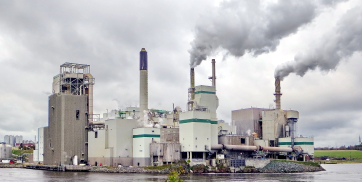Significant Low-Cost Methane Abatement Opportunities in US Oil & Gas
The National Bureau of Economic Research critically summarizes the range of methodologies used to estimate methane abatement costs in the oil and gas sector. The methods described include engineering models, econometric analyses of gas markets, and retrospective studies of state-level regulations. The authors synthesize the results of these studies, finding that:
- There is significant potential of low-cost abatement opportunities with up to 50% reductions.
- As abatement levels exceed 60–80% below baseline, marginal abatement costs rise steeply.
- As new detection technologies become more available, net abatement costs may become negative in more cases.
However, the authors urge caution when interpreting marginal abatement cost curves here.
Diurnal Emissions Variation from Continuous Measurement Analysis
Two years of continuous tower network measurements in the Delaware Basin are analyzed for temporal variability. Implications for inventory and measurement strategies are investigated. Results include the following:
- Data inversion suggests that daytime emissions may be 50% higher than at night.
- No significant difference was observed between weekday and weekend emissions.
- Top-down measurements during daytime hours may be biased high relative to average emissions.
While the findings suggest a possible overestimation bias in daytime-only top-down measurements, the authors note that correcting for this does not fully account for the persistent gap between top-down estimates and EPA’s bottom-up inventories here.
Uncertainty Analysis in Drone-Based Methane Quantification
A systematic analysis of potential errors in methane emission quantification surveys using the mass balance method is presented. Parameters related to the acquisition of concentration data and postprocessing are analyzed. Key findings include:
- The largest errors can occur under steady wind conditions with coherent plume shapes (contrary to industry intuition).
- To reduce outlier influence, surveys should include multiple passes with robust postprocessing.
- Measurements should be taken with fine vertical resolution and at a sufficient distance downwind.
The authors present a dimensionless quantity for survey design, which they use for optimization of survey design here.
Long-Term study of Continuous Monitoring Technologies at Midstream Compressor Stations.
A long-term concurrent field test of five continuous methane monitoring (CMS) technologies at midstream compressor stations is presented. Through a combination of known emission events and controlled releases, CMS are assessed for detection, localization, and quantification of both turbine and engine driven stations. This study found that:
- CMS systems could differentiate between operational states.
- Positive detection of emission events in underlying data often did not trigger alerts.
- Low-rate or short-duration emission events have the potential to be missed.
- The effectiveness depends on site complexity, sensor placement, and baseline emission characteristics.
A need for better quantification and localization accuracy is underscored; the authors recommend cautious deployment of CMS in midstream contexts and emphasize that further evaluation is necessary before widespread adoption here.
Challenges with Developing Measurement Informed Inventories
Measurement-Informed Inventory (MII) methods at midstream natural gas facilities are investigated by integrating two top-down (TD) aerial measurement technologies into a traditional bottom-up (BU) inventory framework. This study discusses several challenges to successful MII implementation in midstream contexts, such as:
- Large discrepancies between the two TD methods analysed here.
- Analysis costs were often underestimated.
- Improved internal data systems and task automation are needed to alleviate high labor cost.
The authors recommend that future MII efforts deploy multiple TD methods, enhance uncertainty characterization, and engage industry working groups to develop standardized, tested approaches here.
Aircraft Based Oil and Gas Emissions Quantification in Romania
Top-down methane emission estimates from the 2019 Romanian Methane Emissions from Oil and gas (ROMEO) campaign are reported, combining aircraft-based in situ measurements with atmospheric modeling. Substantial under-reporting of oil and gas emissions to international inventories are suggested, and underscore the variability of emissions across production clusters.
Key findings include:
- The emissions estimated here are approximately 3 times higher than reported to UNFCCC.
- The aircraft based-estimates are largely corroborated by previous ground-based measurements.
- Mass balance flights show large spatial variations in emissions, pointing to the contribution of individual super-emitters.
The authors highlight the complementary value of airborne and ground-based surveys, especially in capturing super-emitter influence, differentiating O&G from non-O&G sources, and improving spatial coverage and attribution here.
Airborne Emissions Quantification of West African Offshore Facilities
The first aircraft-based methane emission measurements from West African offshore oil and gas are presented. Conducted as part of UNEP’s Methane Science Studies, the 2022 METHANE-To-Go Africa (MTGA) campaign was focused on Angola. Key findings include:
- Methane emissions for 2021 and 2022 were underestimated by operators by ~two-thirds
- Older, low-producing platforms showed significantly higher emissions than newer deep-water facilities.
- Production volume is a poor proxy for methane emissions; facility age and maintenance status are stronger indicators of risk.
- Low CO₂ concentrations in plumes suggest limited flaring — highlighting direct methane release as the dominant emission pathway.
With an observed methane intensity of 2.6% in this study, the authors recommend improved reporting, measurement, and operator awareness here.
Recommendations to Address Methane Emissions in Southeast Asia
Research to address methane emissions in East Asian LNG is presented by ESRIA*. As a critical player in the global natural gas industry, the report makes 5 specific recommendations:
- ASEAN stakeholders should respect fundamental methane emissions practices
- ASEAN should play a pivotal role in Global methane emission management whilst ensuring energy security
- Standardization and harmonization of methane emission measurement guidelines are essential
- ASEAN should leverage the expertise of Japanese companies to accelerate methane emission management
- Natural gas with low methane emissions across the entire supply chain should be selected
The report advocates for aligning regional practices, with international standards, as well as promoting sustainable growth in the ASEAN LNG value chain here.
*Economic Research Institute for Association of Southeast Asian Nations and East Asia





